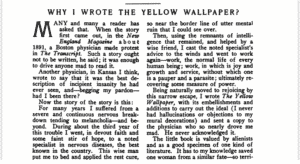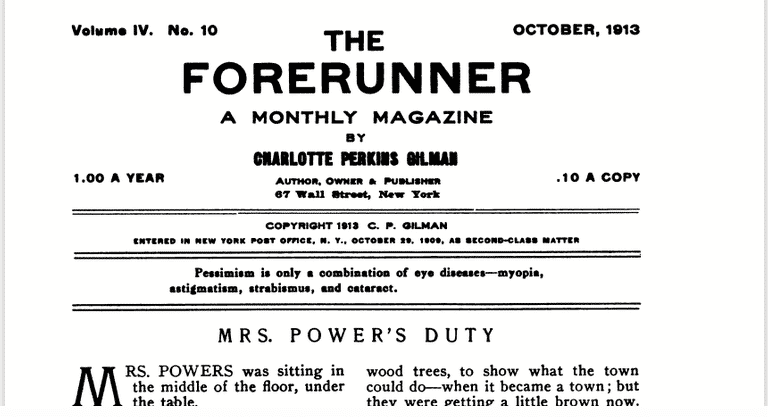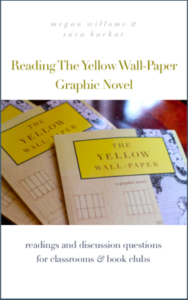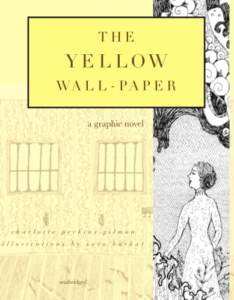Why I Wrote the Yellow Wallpaper?
Many and many a reader has asked that. When the story first came out, in the New England Magazine about 1891, a Boston physician made protest in The Transcript. Such a story ought not to be written, he said; it was enough to drive anyone mad to read it.
Another physician, in Kansas I think, wrote to say that it was the best description of incipient insanity he had ever seen, and—begging my pardon—had I been there?
Now the story of the story is this:

The Forerunner Original 1913 October Issue featuring “Why I Wrote The Yellow Wallpaper?” by Charlotte Perkins Gilman
For many years I suffered from a severe and continuous nervous breakdown tending to melancholia—and beyond. During about the third year of this trouble I went, in devout faith and some faint stir of hope, to a noted specialist in nervous diseases, the best known in the country. This wise man put me to bed and applied the rest cure, to which a still-good physique responded so promptly that he concluded there was nothing much the matter with me, and sent me home with solemn advice to “live as domestic a life as far as possible,” to “have but two hours’ intellectual life a day,” and “never to touch pen, brush, or pencil again” as long as I lived. This was in 1887.
I went home and obeyed those directions for some three months, and came so near the borderline of utter mental ruin that I could see over.
Then, using the remnants of intelligence that remained, and helped by a wise friend, I cast the noted specialist’s advice to the winds and went to work again—work, the normal life of every human being; work, in which is joy and growth and service, without which one is a pauper and a parasite—ultimately recovering some measure of power.
Being naturally moved to rejoicing by this narrow escape, I wrote “The Yellow Wallpaper,” with its embellishments and additions, to carry out the ideal (I never had hallucinations or objections to my mural decorations) and sent a copy to the physician who so nearly drove me mad. He never acknowledged it.
The little book is valued by alienists and as a good specimen of one kind of literature. It has, to my knowledge, saved one woman from a similar fate—so terrifying her family that they let her out into normal activity and she recovered.
But the best result is this. Many years later I was told that the great specialist had admitted to friends of his that he had altered his treatment of neurasthenia since reading The Yellow Wallpaper.
It was not intended to drive people crazy, but to save people from being driven crazy, and it worked.
—Charlotte Perkins Gilman
What Was The Forerunner?
Based in New York City, The Forerunner was a monthly publication produced and funded by Charlotte Perkins Gilman—author of “The Yellow Wallpaper.” The magazine was active from 1909 through 1916. She wrote the entirety of each issue, which included editorials, critical articles, book reviews, essays, poems, stories, and six serialized novels. Her interest in gentle and subtle—yet stirring—methods for social change for women was the passionate force behind The Forerunner. In this way, she was able to shuttle progressive ideas to the publication’s middle-class readers, through work that was easier to relate to than overtly controversial methods of the women’s suffrage movement. (Wikipedia)
After reading Charlotte Perkins Gilman Why I Wrote the Yellow Wallpaper?, you might also want to peruse:
The Yellow Wallpaper Characters List
Why She Created ‘The Yellow Wall-Paper’ Graphic Novel
How to do Literary Analysis: An Experimental Reflection Based on the Yellow Wall Paper
The Yellow Wallpaper Full Text
If you enjoyed Charlotte Perkins Gilman Why I Wrote the Yellow Wallpaper, you might also like these videos:
“Sara’s stunning, heartbreaking, and relevant illustrations help to tell a difficult, haunting story. I will return to the story, as I do with all those stories I love, again and again.”
—Callie Feyen, teacher


